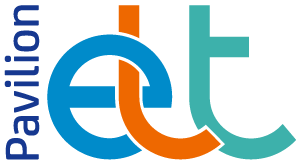In this series, Nicky Hockly explains aspects of technology which some people may be embarrassed to confess that they don’t really understand. In this article, she explores a popular new way of exchanging information.
1. Webinar? Can you explain what you mean?
Web + seminar = webinar. Essentially, webinars are online seminars, presentations or workshops, usually open to the general public, and often free. They take place in real time and last around an hour. Recorded webinars can be accessed asynchronously (at any time). Webinars frequently focus on one specific topic, although they can form part of a series over time.
2. Where do you attend a webinar?
Webinars can take place in different ‘platforms’. You can have a webinar in a text-based platform, where the participants and the presenter interact via text. For example, the British Council Learn English Facebook page holds weekly webinars (or ‘chats’) about grammar for students of English. You can have a webinar in an audio-only platform, where you hear but don’t see the presenter and participants, although you can view the presenter’s slides. Education Week holds regular free audio webinars: go to www.edweek.org/ ew/marketplace/webinars/webinars.html. You can have a webinar in a videoconferencing platform, where you both see and hear the presenter – and possibly the other participants as well.
With the spread of reliable broadband internet access, video-conferencing platforms tend to be the tool of choice for webinars, as it is usually more engaging to have video, audio and visual support (such as slides). See below for some examples.
3. What webinars do you recommend for teachers?
In the last year or two, there has been a steady increase in the number of videoconferencing webinars on offer for English language teachers. Many publishers (eg Macmillan, Pearson, OUP and CUP) offer regular webinars, as do several English language teaching associations. These are all free and are an excellent source of professional development for teachers. There are even online conferences which consist of a series of online presentations over several days.
Here are some organisations that offer free webinars for English language teachers:
IATEFL
Several of the IATEFL Special Interest Groups (SIGs) offer monthly webinars on topics of interest. These webinars are free and open to the general public, while access to webinar recordings is usually limited to SIG members:
- BESIG (Business English SIG): www.besig.org
- LT SIG (Learning Technologies SIG): http://ltsig.org.uk
- YL SIG (Young Learners SIG): www.yltsig.org
American TESOL Institute
This organisation offers free webinars every Friday on a range of classroom-related topics of interest to English language teachers. Webinars are recorded and can be freely accessed on the website after the event. Go to http://americantesol.com/ tesol-lectures.htm.
Virtual Round Table Conference
This annual online conference provides a rich resource of webinars aimed at English language teachers. Have a look through the webinar archives from conferences over the past few years (www.virtualround- table.com) – and make sure you attend the 2013 conference!
4. What do I need to attend a webinar?
To take part in a video-conferencing webinar, you need a reliable internet connection and speakers (or preferably a headset) to be able to hear the webinar presenter. Most webinar participants contribute to the session via text chat in video-conferencing webinars, adding their opinions on the topic, interacting with each other or asking questions. Some webinars will offer you the chance to use audio (and possibly even video) to ask the presenter questions, but given that public webinar audiences tend to be large (40+), most participant interaction is limited to the text chat room for logistical reasons. If your internet connection is unreliable or slow, you may be able to freeze or close the presenter’s video window, and just receive audio – this will take up less bandwidth and make for a more stable experience.
5. What are the dos and dont’s for webinar presenters?
As a presenter, there are two main areas to consider when preparing for and running your webinar: technical issues, and how to involve or engage your participants. Technical know-how includes using a headset rather than a stand-alone microphone and speakers (which can cause echo for listeners), and using a cable broadband connection rather than Wi-Fi for video-conferencing if possible – the former is more reliable. Techniques to engage your webinar participants include creating short tasks that involve your audience, and looking at your webcam when speaking rather than at your computer screen. Take a look at these two short videos that include excellent advice from experienced webinar presenters around the world:
- Webinar tech tips – http://youtu.be/hebbpe6MVLw
- ‘Involving your audience’ tips – http://youtu.be/UcqoZRZOlDw
And perhaps most importantly for webinar presenters, be interested in and engaged with your subject matter – that way, your audience is more likely to be interested in and engaged with what you have to say!
Nicky Hockly has been involved in EFL teaching and teacher training since 1987. She is Director of Pedagogy of The Consultants-E, an online teacher training and development consultancy. She is co-author of How to Teach English with Technology, Learning English as a Foreign Language for Dummies, Teaching Online and Digital Literacies. She has published an ebook, Webinars: A Cookbook for Educators (the-round.com), and she maintains a blog at www.emoderationskills.com.
This article first appeared in English Teaching professional, Issue 82, September 2012





